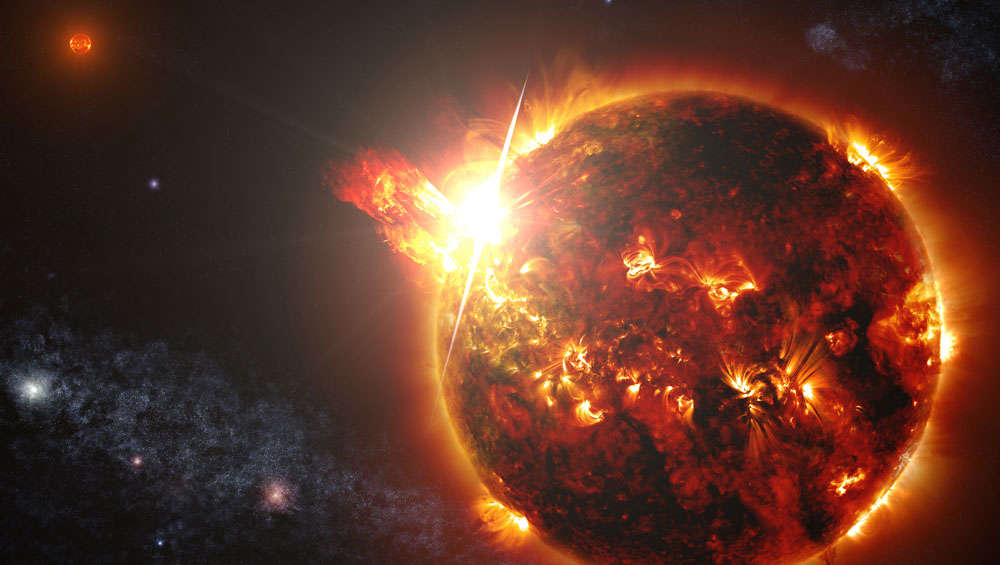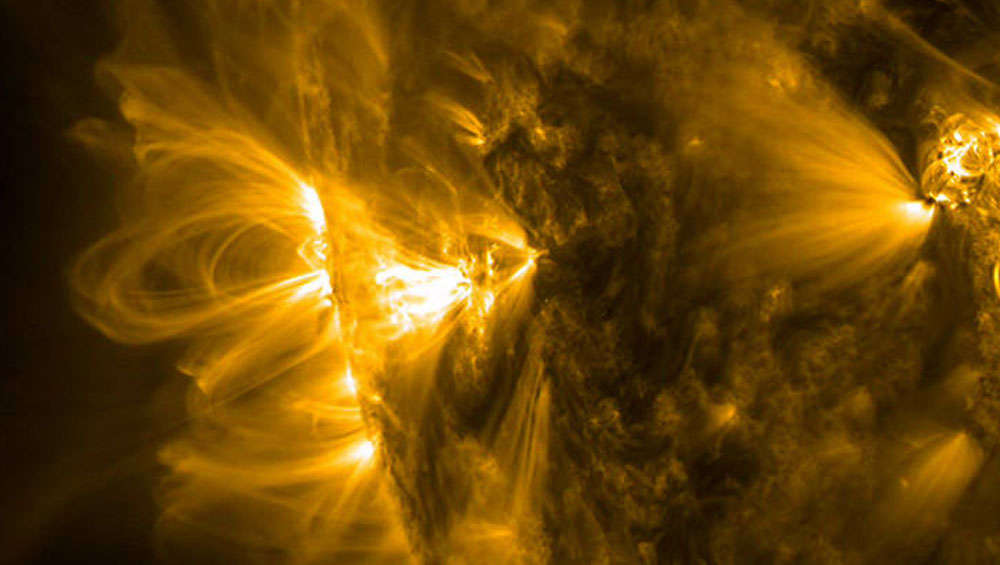Create a free profile to get unlimited access to exclusive videos, sweepstakes, and more!
Now we know where the most dangerous particles on the Sun come from

The ancients deified the sun for a reason. Its life-giving rays bring light to Earth that makes it possible for photosynthetic processes to occur, which keeps the entire food chain going. But... our star has a dark side.
Solar winds can really mess with our satellites, airlines, and electronic infrastructure. They are more hazardous to astronauts who are exposed to cosmic radiation on the ISS (and soon the moon) and even to passengers on an otherwise uneventful flight. Scientists have finally found the source of the most dangerous particles on the sun, which are highly charged and released during solar storms. They lurk close to the middle region of the solar atmosphere, the chromosphere, which is low in the Sun’s corona. These particles have the same chemical “fingerprint” as those that come hurtling towards Earth during solar storms.
By measuring data from NASA’s Wind satellite and JAXA’s Hinode satellite, solar physicist Stephanie Yardley and her research team were able to see how the most threatening solar particles that hit Earth compared to those on the Sun by tracing the regions they spawned in. Turned out the exact same ones were hiding near the top of the chromosphere.
“We used a unique chemical composition fingerprint of solar energetic particles — the ratio of silicon compared to sulfur (Si/S),” Yardley told SYFY WIRE. “In particular, we found that the ratio of Si/S was high compared to that of the solar wind. We discovered that the source of the solar energetic particles was plasma confined low down in the sun’s atmosphere by strong magnetic fields.”
Solar particle events happen all the time. Around a hundred of them occur every 11-year solar cycle, from solar flares, or huge explosions, to coronal mass ejections, which happen when the sun vomits out enormous gobs of plasma and magnetic field. The particles that were matched with those that can sabotage electrical infrastructure and other things on or near Earth originate at the bottom of coronal loops. These loops, which are shaped by intense magnetic fields, are glowing curves of hot plasma coming out of the sun’s surface.
Why the solar atmosphere is hotter than the surface is a mystery that coronal loops may eventually help solve. It is more urgent that we find out when a stream of hazardous particles is heading our way so we can have enough time to take precautions. Forecasts from space weather prediction centers are currently made while solar events are in progress. These forecasts have had a few recent breakthroughs (which are too new to have been put into use yet) but are not accurate enough. Many end up in false alarms. Yardley believes finding out more can upgrade our technology.
“If we know more about the sources of these particles, we can improve the capabilities of current forecasts,” she said.
Forget spacecraft and satellites. Just being on an airplane is enough to put you at risk of exposure to these high-energy particles. There is no sunblock that can ward off that kind of radiation. Though it is possible to reroute flights or keep planes at lower altitudes to avoid it, with all the false alarms that we get now, it would end up causing financial problems for the airline companies if solar storm warnings are inaccurate.
These are the same particles that are thought to be largely responsible for blasting through the atmosphere of Mars, and you know how that went. The Curiosity Rover actually detected a particle event that busted out from the region Yardley studied. Out of what remains of the Martian atmosphere, more is lost during hardcore solar events. At least Earth has a magnetic field to protect against being morphed into the Red Planet. Mars also lost its atmosphere in the distant past, when the solar wind had more power to obliterate its atmosphere and essentially turn it into both a freezer and a desert.
“The next step would be to see if this composition fingerprint that we measured is unusual or if it is a common feature of solar energetic particle source regions. Also, recently launched missions such as Parker Solar Probe and Solar Orbiter will provide us with new and unique observations during the latest solar cycle that will help advance our knowledge,” said Yardley.
For now, if you’re going to get on a plane anytime soon and you have a window seat, make sure to shut that window.















